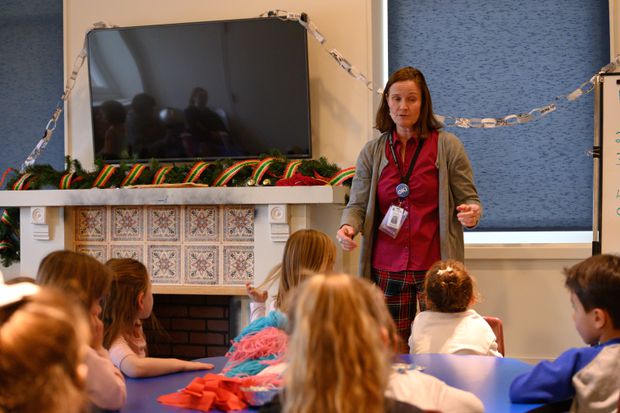A trip to the Galt Museum and Archives is a regular part of the grade-school experience in Lethbridge, Alta.
Roughly 10,000 students from schools throughout the region arrive each year on field trips to learn about the history of southern Alberta, hear the stories of the Blackfoot Confederacy and see local art. The museum also runs Fort Whoop-Up, a replica fur-trading fort located a short walk away.
But the COVID-19 pandemic has meant that most of those trips won’t happen this year, forcing the Galt to quickly shift to online programming for the fall or, in some cases, send staff out to visit students in schools.
For students learning from home, the museum is taking advantage of their smaller numbers and inviting them into the building, whether they are among the expected increase in home-school students or from “learning pods” of families who have hired private teachers because of the pandemic risk.
“We still want to provide some value to the community in a way that they are comfortable with,” says Rebecca Wilde, who is the Galt’s museum educator. “Those field trips are about getting out and broadening their experience.”
Museums across the country are figuring out how to reach students this year in the face of COVID-19 restrictions that have both limited their ability to invite large groups of children on-site and in many cases have eliminated the possibility of field trips altogether. Many are scrambling to create online content, including lectures, virtual tours and live interaction with museum guides and experts.
Some are also beefing up programming they have previously offered to home-school students, anticipating an increase in demand from families who have decided to keep their children at home this year.
The Royal BC Museum in Victoria doesn’t expect to have on-site programming until 2021, forcing it to move all of its programming online.
Liz Crocker, who develops digital learning programs, said the museum has been staging virtual field trips for several years and has quickly scaled that up to be prepared for the school year. Those programs are designed to be adjusted for any grade level.
She said the experience will be different from what students are used to. Instead of a session on-site that can last up to two hours, the museum has created shorter programs of between 30 and 45 minutes with a variety of content to keep students engaged.
Having students participating at multiple locations, such as home-schooled students each at their own homes, will add another wrinkle, she said.
“We are like every other museum and everybody else – we have no idea what it’s going to be like in the fall,” she said. “So we’re trying to be nimble.”
The digital field trips cost as much as $120 per class, which is why the museum expects families with children learning from home to pool together into larger groups.
At Telus World of Science in Edmonton, the facility is taking what it learned during its virtual summer camps to create school programming – all virtual.
Schools that sign up for programs will either get a list of supplies to have on hand or a kit from the science centre to ensure students can do the activities. The facility typically sets aside one day a month for students learning at home; this year, that is expected to increase to at least once a week, says Andrea Brickwood, director of education.
World of Science is also planning to offer discounts to home-school families, who can come in smaller groups and won’t be affected by school field-trip policies.
Nancy Nickolson, the family programs co-ordinator at the Royal Alberta Museum in Edmonton, said the museum began focusing on its digital content as soon as it was forced to close during the abrupt lockdowns in March.
She said that has created new opportunities to reach students outside of Edmonton who wouldn’t be able to visit the museum in person, and to offer behind-the-scenes access to areas of the museum not normally open to the public.
Ms. Nickolson said limits imposed by COVID-19 could actually help the museum connect with more people in line with its mandate to reach all Albertans.
“This whole thing is such a new opportunity,” she said. “Going virtual actually makes it a lot easier, because travelling to us is such a barrier.”
The Aga Khan Museum in Toronto, which already has a robust collection of digital content, is also looking at ways to broaden its reach beyond local students, said Jovanna Scorsone, education and public engagement manager.
“All the communities that couldn’t reach the museum normally will be able to engage with us, and I think it’ll be useful even beyond COVID,” she said. “It’s a great opportunity for us to serve the audience more broadly.”
Vancouver’s Museum of Anthropology, which is on the University of British Columbia campus, has been developing a suite of online programming, including pre-recorded videos, live presentations from staff and volunteers, and virtual tours to get a close-up look of the museum’s artifacts.
A tour on a smartphone screen or a laptop won’t be the same experience as an in-person visit to the museum, where students would normally wander around towering totem poles in the Great Hall, walk outside to explore Haida buildings constructed by Indigenous artists Bill Reid and Doug Cranmer, or comb through thousands of exhibits in the galleries.
Jill Baird, curator of education, said the museum is also focused on incorporating Indigenous voices into its online programming, which students would have experienced at the museum through pictures, videos and sound.
She said the goal is to get participants as close as possible to the museum’s exhibits, while recognizing that the experience will be different.
“I really think you have to be in the spirit of openness and adaptability and creativity, and something will come of this,” she said.
“That’s what educators do – they make great things out of a mess.”
JAMES KELLER
The Globe and Mail, September 8, 2020

